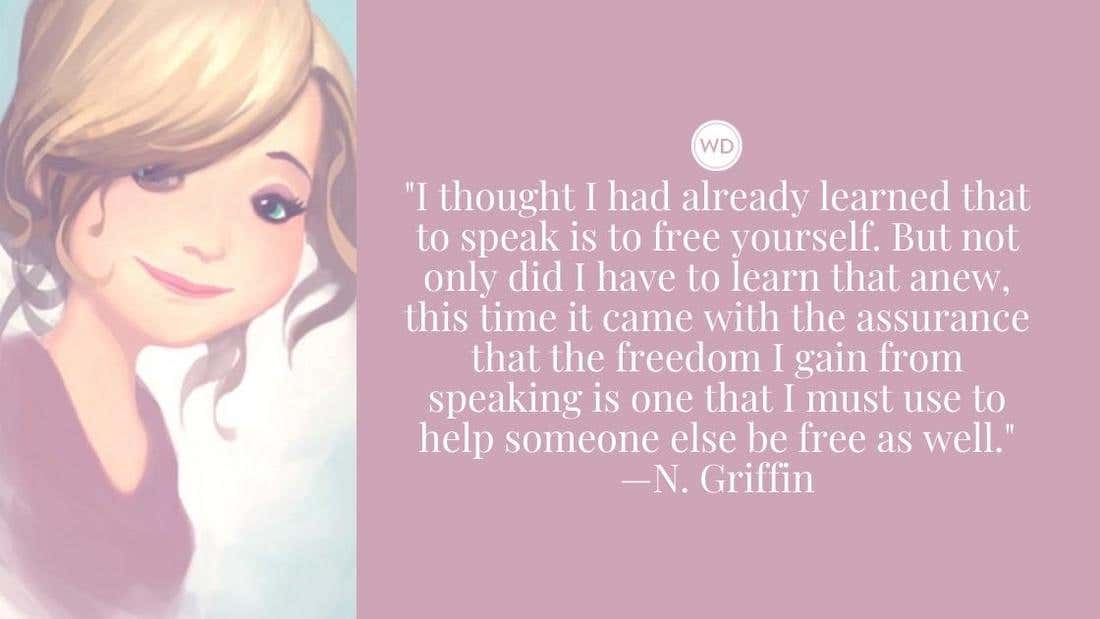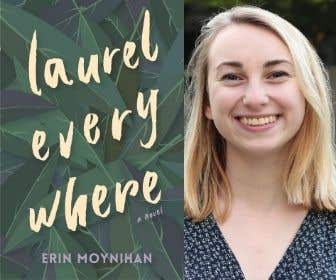More & More & More Tales To Give You Goosebumps (Yeah, We’re Talking About R.L. Stine)
Hilarious! Scary! Terrifyingly prolific! Meet middle-grade horror legend R.L. Stine.
Something about R.L. Stine freaks me out.
It’s not that he acts nothing like you might assume, though he is wearing all black. He’s funny and charming, and his amiable character throws kids off on school visits: “They expect someone with fangs, wearing a cape,” he says.
It’s not that nobody calls him “R.L.” except book jackets. (He goes by Bob.)
It’s not even that he has written some 300–400 books (!), and has sold more than 350 million in his Goosebumps series alone, making him at one point the bestselling children’s series author of all time. (He’s now No. 2, right behind J.K. Rowling.)
No, it’s how he writes the things that freaks me out: He begins with the titles.
“That’s the inspiration!” he says with a laugh. “You want to know where ideas come from—for me, they come from the title.”
For instance, he was walking his dog around New York City, and he thought, Little Shop of Hamsters. It just popped into his head. He liked it, so he came up with a story to bring it to life—What can I do to make hamsters scary? OK, a boy goes into a strange pet shop. It’s all hamsters, and there’s something wrong with one of them …
“Most authors I know work backwards,” he says. “I can’t do it.”
So I decide to conduct an experiment: I’m going to be like Stine. I’m going to work backward, and I’m not going to write a word of my article about him until I’ve got the perfect title, one I can build a story around. Simple enough for a little profile, right?
And without knowing it, I’ve fallen into the trap of R.L. Stine, the trap of writing for kids, maybe the trap of writing anything: It all looked so damn easy.
Which means it’s time for magazine placeholder text:
Title TK.
THE FIRST SCREAM
Naturally, Stine’s story started with fear.
When he was a kid growing up in suburban Columbus, Ohio, Stine’s mom had an ominous rule: Never go up to the attic. He obeyed—but he’d lie in bed at night and wonder what horrifying things might be up there, and the monster in the attic found its way into the scary stories he and his brother had a habit of trading at night. (Of course, Stine would end his with a cliffhanger to torture his sibling—a technique patrons of Stine’s fiction would recognize well, including grown magazine editors spotted researching at coffeehouses, unapologetically flipping Goosebumps pages wide-eyed.)
Eventually, he faced his fears and climbed the stairs. He was 9 years old, and although no monsters were lurking about—turns out his mom just didn’t want him going up there because the floorboards were rotting—he found something else. Something that would eventually leave millions of kids addicted to nefarious ventriloquist dummies, demonic masks, deranged teachers, et al. …
And this is probably going to sound too good to be true, too convenient, but I’m really not making it up:
The young storyteller found a typewriter.
So he wrote—but his roots began in goofball humor, not horror. Comics (“Super Stooge”). Joke magazines (“HAH, For Maniacs Only!!”). On and on.
“My parents didn’t understand it at all,” he says. “You know, some guy staying in his room typing. And my mother would say, ‘Go out and play, go outside—what’s wrong with you?’ I’d say, ‘It’s boring out there.’”
Thus, he’d stay in his room and create. And as the years went on, he never stopped.
“People say, ‘What advice do you have for people who want to be writers?’ I say, they don’t really need advice, they know they want to be writers, and they’re gonna do it,” he says. “Those people who know that they really want to do this and are cut out for it, they know it.”
After he graduated from Ohio State in 1965, he moved to New York City to fulfill his dreams of working for a magazine … but the only gig he could rope was one in which he was told to make up interviews with celebrities for fan magazines. So he did—he (faux-)interviewed all the greats, from The Beatles to Diana Ross, and he sharpened both his speed and his imagination in the process.
Following a flat stint at Soft Drink Industry (no joke), he found his way to Scholastic, where he’d spend the next 16 years, mastering the art of writing at different grade levels, and presiding over his kids’ humor magazine, Bananas.
His debut book, How to Be Funny, followed in 1978—under the name “Jovial Bob Stine.” He wore bunny ears to his first signing.
In those days, Stine was in heaven: He’d always wanted his own humor magazine, and now he had it.
“I thought I would just coast for the rest of my life,” he recalled at a recent appearance. “It didn’t work out.”
More specifically, his magazine folded—so Stine began freelancing full time, producing a boggling variety of material: bubblegum cards, Indiana Jones and G.I. Joe novels, coloring books, joke books, scripts for “Eureeka’s Castle” on Nickelodeon (where he became head writer).
And then one day he sat down for a lunch that—forgive the cliché here, but it really is true—would change his life forever. And, naturally, it all started with a title. Which brings me back to my problem.
Title Update: Not going well. “It Came From Ohio!”? Perfect, but it’s the title of his autobiography, and likely would come across as, well, lazy, given my extravagant setup. “The Monster in the Attic”? Very 400 words ago. “Title TK”—calling it that would be funny and clever, right? No. “In the Wake of Super Stooge”? Potentially offensive. Sigh.
Title TK.
GHOULS GONE WILD!
At that fateful lunch with Stine’s Scholastic friend Jean Feiwel, she asked him a simple question: Have you ever thought about writing young adult horror? And she made an equally simple suggestion: Go home and write a book called Blind Date.
“I said, ‘OK, sure, no problem,’” he recalls.
And the amazing thing is—and this is a hint at what makes Stine stand out from millions of other writers, a testament to how much of a born storyteller he truly is—he actually did it. He outlined for a month. He wrote for three. He spent a month revising. He sent it in. It came out in 1986, and became an instant bestseller.
During the writing process, he developed his trademark cliffhanger chapter structure—something he picked up in his humor career. In fact, Stine says the line between humor and horror isn’t all that distinct—horror is like a rollercoaster in which the intention is to laugh and scream simultaneously. And a cliffhanger is a lot like a punch line.
“I think after I came up with that, it was easy,” he says. “Then, it was storytelling.”
More books followed—notably his breakout series, Fear Street (the title just popped into his head, so, of course, he wrote the books to accommodate it). Novels began pouring out of him at a monthly rate.
How’d he match the demand? “Writing is the only thing that ever came easily to me,” he says. “It’s the only thing I’m really competent at. And I never had trouble. I was always confident about it; I could always sit down and write 10 pages. In those days, I could write 20 pages a day.”
Still, he didn’t feel like a hit yet—at least nowhere near the caliber of a hit he’d become. But then he got a call from the book packaging company his wife founded, Parachute Press—they wanted to know if he’d like to try writing books for younger kids … novels that married his horror skills and his humor abilities. R.L. meets Jovial Bob, if you will.
Naturally, he needed his title. One day, he was browsing TV Guide, and he saw an ad proclaiming that it was “Goosebumps” week on Channel 11. (In a delightfully corny joke he’s fond of telling, he called his wife over and said he’d found the title—Channel 11!)
He wrote the first Goosebumps book, Welcome to Dead House, in just over a week. It was released in 1992. Two more books followed, to little fanfare.
And then everything exploded. Kids went nuts for it. Stine says there was no advertising, no hype, no bunny-eared signings. It was just readers telling readers—the best advertising an author can get. Oodles of books followed. T-shirts. TV shows. A Goosebumps attraction at Disney World. Overall, he attributes the series’ mindblowing success to the fact that it was the first to nab equal amounts of female and male readers.
“It was unbelievable for me—you just never dream of having something like that,” he says. “I don’t know if it taught me any lesson; it was just lucky, I think. The only lesson is, you gotta keep at it.”
Title Update: I am now at war with the title (not to mention the meta fits the article seems to have contracted). The story is too far gone to be written based on it anymore—but it still has to be good, Stine-ish. My designer has just inquired about the status of the piece. It’s long overdue. “If you can just get me the hed and dek, I can start …” she says, mercifully. I flee the office. At home, a brilliant idea emerges: I’ll call Stine, and ask him what he’d title the thing. Yes! He’s the master, after all. So I do. But he’s on vacation; the doctor is out. Uh-oh.
Title TK.
FIELD OF SCREAMS
First off, yes, Stine is still writing. A lot. And second—and this is something I bring up only because he laughingly notes it’s one of his biggest pet peeves on Twitter or during a library visit—he’s not “a blast from the past,” and no, he is not dead.
Far from it: He’s written about 100 Fear Street books and about 105 Goosebumps. He sits down at 10 a.m. and writes six days a week. He does six new Goosebumps a year, which he has described as “like a vacation,” compared to his previous output. His method?
A Goosebumps manuscript is 120 pages. He has his title. He doesn’t really do research, preferring to work off his imagination. He creates a character list and takes two to four days to outline—extensively (which he says also prevents him from getting writer’s block). The outline has dialogue, every chapter ending, and so on, up to 20 pages. And then, when he returns to the book, all the work is done. He writes 10 pages a day, does a second draft for a couple days, and turns it in. Grand total: About three weeks.
How does he pull it off? He says you have to love it.
“I’m cut out for it,” he says. “I’m cut out for working at home: I don’t get distracted, I’m very disciplined. …”
When asked if he’s gotten tired from producing such a massive output for so many years, he laughs.
“Well, look at me! I’m a wreck!” he says. “No, I still enjoy it. I still look forward to it in the morning. It’s gotten harder to come up with new ideas. It’s more challenging: new kinds of scares, new chapter endings …”
And he’s still garnering accolades. This past summer, Stine took home the top award of ThrillerMaster at the massive ThrillerFest genre conference. International Thriller Writers co-president Douglas Preston—co-author of The Monster of Florence and Relic—says many thriller writers love Stine, because he brought them their audience by hooking their future readers when they were kids.
“He’s incredibly inventive,” Preston says. “I don’t know if I’ve ever met anyone who has just had so many fantastic ideas.”
Waiting in line at Stine’s ThrillerFest book signing, Sandra Brannan, author of In the Belly of Jonah, says she too loves his work—he scared her kids to death.
“His strength is he definitely knows his audience,” she says. “He writes for that audience, and we’re all those 7- to 12-year-olds that love to be scared.”
Which brings us to something that may upset some writers on first read. It can be hard to hear. But hear him out. During our interview, I ask Stine what he thinks is the worst writing advice out there.
“Well, I hate it when authors come into a school and they say to kids, ‘Write from your heart, write from your heart, only write what you know, and write from your heart.’ I hate that because it’s useless. I’ve written over 300 books—not one was written from my heart. Not one. They were all written for an audience, they were all written to entertain a certain audience.”
The problem with such advice, Stine says, is that if you tell people to write from their hearts and to write only something they know, they get blocked totally. Instead, he says, it’s all about the imagination. (Hey, it worked for him.)
As for the writing he does for those very kids, Stine does have rules he plays by in his books: Keep the language simple. Show kids that reading is fun and easy. Keep the parent characters out of the way, and let the kids find a way out of the trouble using their own wits. Don’t cross the line of being too scary. Also, skip the references to things that happened before the audience was born.
Of course, while writing may seem like the only thing Stine does, he lives a normal life in his beloved New York City home, devoid of the capes and fangs some of his readers expect: He goes to the theater and opera, he walks his dog in the park, he takes vacations.
As for the future, he’s 68 but has no plans of retirement, and is working on an adult novel right now because he wanted a challenge. Which brings me to ask him if he ever gets tired of being so closely associated with a single series, like Goosebumps.
His answer is immediate.
“No, I love it. It’s a wonderful thing. I feel so lucky. I would never resent it in any way,” he says. “I’ll always be Goosebumps Author R.L. Stine. I’ll always be called that. Always.”
I mention that I was going to ask him what he wants his legacy to be.
“That’s it,” he says, laughing. “You can’t escape it, right, so you might as well enjoy it, right?”
And then, on my desk, I see it. Finally. My title.
Indeed, I fell into the trap of Stine, the trap of any writing: It all looked so easy. But it’s also monstrously easy to overcomplicate the craft for yourself (see: my fool’s errand that became this narrative). Stine’s ride wasn’t an easy one, but if you think about it, his path to success wasn’t all that complicated: He became so skilled because of years of practice, years of honing his craft, chiseling away at an inescapable urge.
Years of doing the only thing he was ever good at (his words, not mine).
Like, say, writing the series that is his legacy. And what you can expect from him in the future and beyond:
More & More & More Tales to Give You Goosebumps
… The name of one of his books piled high atop my desk. Which is another thing that freaks me out about
R.L. Stine: Turns out he gave me some help with my title long ago without even knowing it—not to mention all my subheadings. Damn, he’s good.
Zachary Petit is a freelance journalist and editor, and a lifelong literary and design nerd. He's also a former senior managing editor of Writer’s Digest magazine. Follow him on Twitter @ZacharyPetit.









